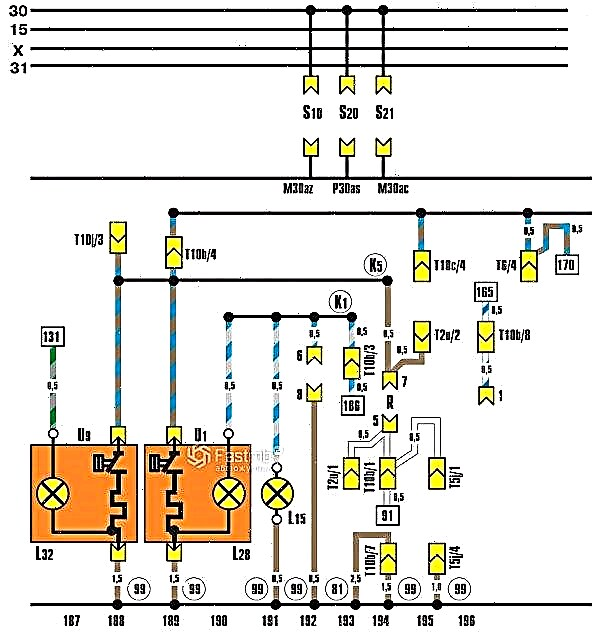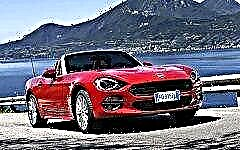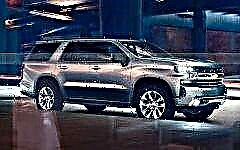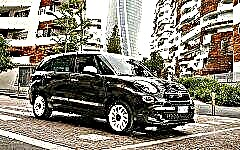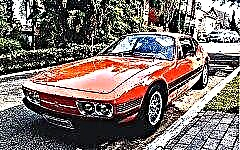

The content of the article:
- Volkswagen SP2
- Volkswagen Iltis
- Volkswagen 411/412
- Volkswagen lotus
- Volkswagen Golf III Harlekin
- Volkswagen-Porsche 914
- Volkswagen Golf G60 Limited
Today the Volkswagen brand, which is part of the Volkswagen AG concern, is one of the largest and most popular automotive companies in the world. However, this is not surprising, because VW cars have long earned a reputation for reliable, well-assembled and unpretentious vehicles.
Looking into the history of the creation and formation of Volkswagen, you can find out that the brand was conceived as a manufacturer of inexpensive cars for the people, and in its track record there is a large number of rare cars that we would like to talk about.
Volkswagen SP2

In June 1972, VW's Brazilian division introduced the Volkswagen SP2 sports coupe, intended exclusively for the Brazilian domestic market.
According to the manufacturer, from the concept to the production version, the car was brought by the efforts of 6 men and 1 woman, who turned out to be the wife of the then head of the Brazilian division of VW Helga Laiding.
The car had an exquisite exterior, made in the best traditions of Italian supercars of the time, as well as a high-quality and ergonomic interior.
One of two power plants could be located under the hood of the car - a 1.6-liter 54-horsepower gasoline engine (installed on the SP1 model) or a 1.7-liter 63-horsepower unit (installed on the SP2 model).
The car was reportedly equipped with an all-steel body and could reach 100 mph, although the speedometer dial was proudly marked to 120 miles.
Despite its striking appearance, the Volkswagen SP2 did not enjoy sufficient popularity and was discontinued in 1976.
Volkswagen Iltis

The VW Iltis, also known as the Type 183, is a small military SUV designed specifically for the needs of the German army.
Production of the model started in 1978, and a year later its special off-road version won the prestigious Paris-Dakar rally. It is known that in the production of an SUV, the manufacturer borrowed a part of most of the components and assemblies from the Audi 100 sedan.
In the period 1978-1985. the car was powered by a 1.7-liter 75-horsepower engine, after which the engine range was supplemented by a 1.6-liter 7-horsepower diesel engine.
VW Iltis had a transfer case in its arsenal, as well as a plug-in rear-wheel drive, which, together with a short front and rear overhang, provided the car with good geometric cross-country ability.
In total, a little more than 16 thousand copies of the SUV were produced, until in 1988 the German military moved to the Mercedes G-class.
Volkswagen 411/412

In the photo: VW 411
In 1968, VW presented its new model 411 to the world community. The car was available in three body styles - a 2-door and 4-door liftback sedan, as well as a 3-door station wagon, which was deservedly considered the rarest of the three.
Specialists from the Italian design studio Pininfarina worked on the design of the model., so the car was fine with this parameter.
The 411th became the first car of the automaker to receive a monocoque body, a 4-door body and a roomy interior. The car was set in motion by means of a 1.7-liter 68-horsepower gasoline engine carburetor, which in 1969 was supplemented with a new fuel injection system, as a result of which its power increased to 80 hp.
It is noteworthy that already at that time, in addition to a 4-level manual transmission, the car could be equipped with a 3-band "automatic".

In the photo: VW 412
In 1972, the 411 was replaced by the 412 model, which received a more powerful 1.8-liter engine and a slightly modified front end. The production of the model was stopped in 1974 due to low demand.
Volkswagen Logus

Another rare representative of the Volkswagen model range is the Volkswagen Logus model, produced in the period 1993-1997. As in the case of the Volkswagen SP2, the car was intended exclusively for the domestic market in Brazil and was a redesigned version of the 4th generation Ford Escort.
The model was offered in an uncontested two-door sedan body and boasted a 1.6 or 1.8-liter carburetor engine. In 1994, the line of power plants was replenished with a 2-liter gasoline engine. It is noteworthy that regardless of the volume and power of the power plant, it was paired with an uncontested 5-speed manual transmission.
Volkswagen Golf III Harlekin

Throughout its history, VW has experimented with the release of special limited edition cars, one of which was the Volkswagen Golf III Harlekin. A total of 264 copies of the model were produced, and all were produced in 1996.
From the point of view of technical characteristics, it was a standard Volkswagen Golf of the 3rd generation, the only exception was an exclusive paintwork that combines a combination of 4 colors: chagall blue, pistachio green, hurricane red and yellow gorse.
According to advertising slogans, there were no two identical versions of the Golf Harlekin in the world, but in practice this was not the case - there were only 4 versions of the car.
Despite the absurdity of the decision, the project found a response among buyers, as a result of which the company's management decided to make also the VW Polo III Harlekin, which was released in a circulation of 3,806 copies.
Volkswagen-Porsche 914

In 1969, as a result of cooperation between VW and Porsche, a small 2-seater sports car was introduced to the world public. The reason for this collaboration was that Volkswagen needed a new sports coupe that could replace the VW Karmann-Ghia, which was removed from the assembly line, while Porsche simply needed an inexpensive car, constructed using parts from the iconic 911.
It is noteworthy that the car was produced in two versions - 914-4 and 914-6, where the first was equipped with a Volkswagen 1.7-liter gasoline power unit with a capacity of 80 hp, and the second - with a 2-liter Porsche gasoline engine with a capacity of 110 h.p.
In addition to a more powerful power plant, the 914-6 version was equipped with more efficient brakes, a retuned suspension and an advanced gearbox.
Unfortunately, the model failed to show good sales, with the result that the 914-6 was taken off the assembly line in 1972, while the 914-4 lasted until 1976.
Volkswagen Golf G60 Limited

This car was produced in a limited series in mid-1989 with the participation of specialists from the sports division of VW Motorsport. A distinctive feature of the car is black metallic color, a false radiator grille with blue edging, Motorsport nameplates and a twin exhaust pipe.
but the most important feature of the Volkswagen Golf G60 Limited is the engine - 1.8-liter 16-valve gasoline with a supercharger G-Lader, generating 210 hp and 252 Nm of peak torque.
A pair of it was a 5-speed manual transmission, thanks to which the car fired from 0 to 100 in just 7.2 seconds, and could also overcome the mark of 225 km / h. Depending on the driver's driving style, average fuel consumption could fluctuate between 9-16 l / 100 km.
A total of 71 copies of such a model were released, each of which was marked with a special metal plate with the number indicated on it.
Conclusion
Despite a fair amount of conservatism, Volkswagen is able to create truly original and striking cars, most of which have left an indelible mark on the history of the global automotive industry.
Volkswagen

